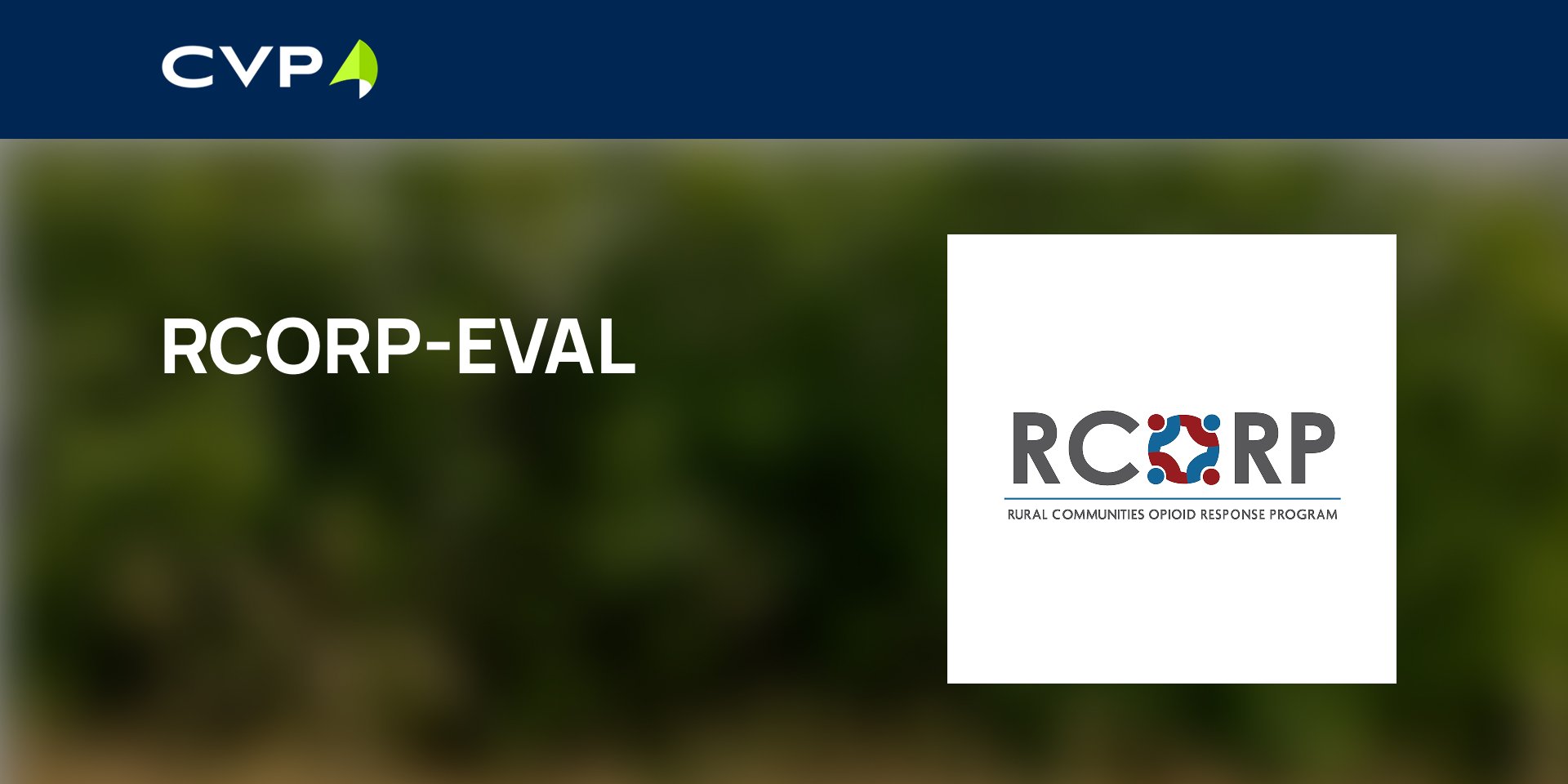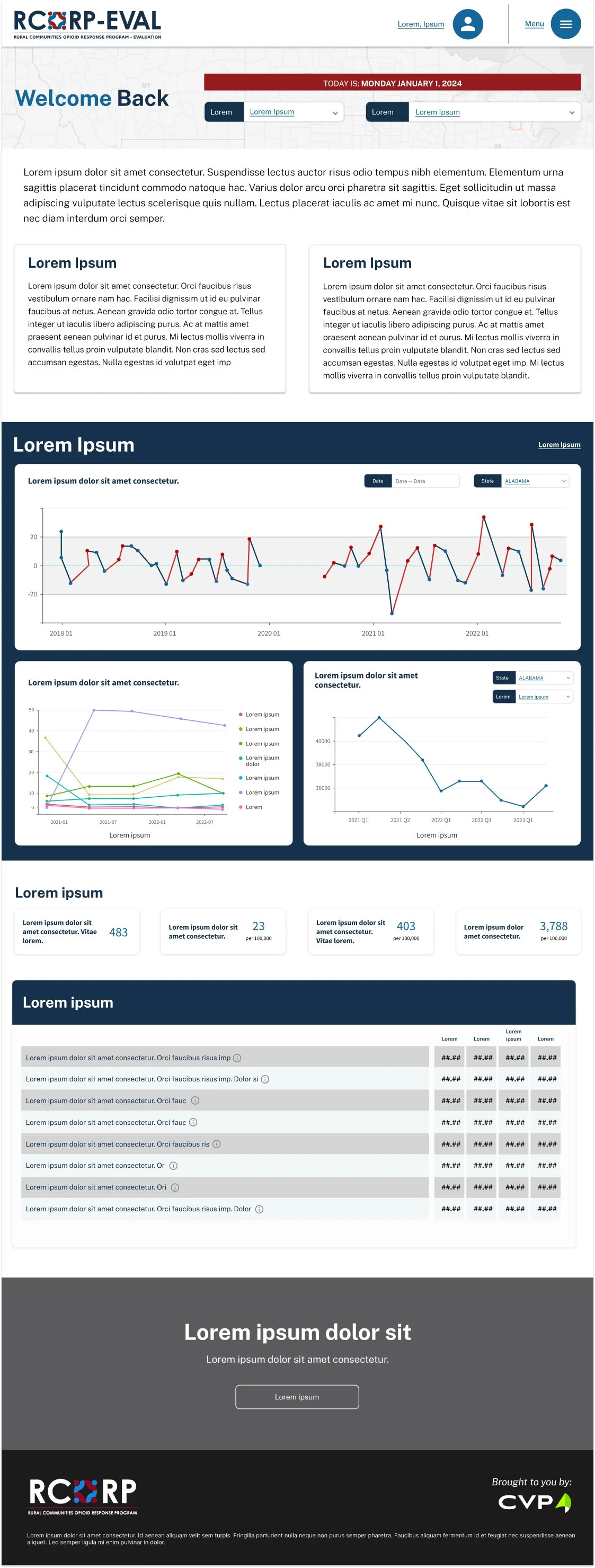
(Disclaimer: All data and information has been changed to placement data and text due to privacy restrictions from the project.)
RCORP-Eval Dashboard
This dashboard is a dynamic and user-friendly tool designed for visualizing, tracking, and downloading Performance Improvement Measurement System (PIMS) data, providing an interactive way to monitor performance metrics effectively.
-
The RCORP-Eval Grantee Dashboard is a data management and visualization system designed to support grantees in tracking and analyzing opioid-related data collected through their grants. This tool allows grantees to input, access, and organize their data efficiently, enabling them to generate insights and reports for grant-related requirements. By centralizing data in an accessible format, the dashboard enhances transparency and supports data-driven decision-making for grant evaluations and funding opportunities.
-
As the User Interface Designer for this project, I was responsible for overseeing the layout design and developing a new Design System from the ground up. I worked closely with the User Experience team to ensure a seamless and user-friendly interface while incorporating feedback from in-person demo testing and user interviews. My role involved translating research insights into intuitive designs, refining the user journey, and ensuring consistency across all visual elements.
-
The development of the RCORP-Eval Grantee Dashboard significantly enhanced the ability of grantees to input, visualize, and access opioid-related data from their grants. By implementing a user-friendly interface and a structured Design System, the dashboard streamlined data management, improving efficiency in tracking performance metrics. The user-centered approach, informed by extensive user interviews and in-person testing, ensured that the final design met the practical needs of grantees. This project not only increased accessibility to critical data but also empowered grantees with a tool that supports informed decision-making, grant reporting, and performance evaluation, ultimately contributing to more effective opioid response initiatives.
The Process:
The development of the RCORP-Evaluation Dashboard commenced after CVP secured the proposal to create the Grantee Dashboard.
(As part of this project, the icon was refined and developed for use as the Favicon, ensuring a cohesive and recognizable visual identity)
Revision of First Draft
This revision reflects the initial insights gained from winning the proposal. It incorporates all the client's requirements, along with feedback collected from users who communicated directly with them. The objective was to present a comprehensive and updated version of the proposal dashboard, ensuring it was ready before their upcoming conference, the RCORP-TA Reverse Site Visit (RSV) 2024, in Washington D.C.
User Interviews
At the conference, we set up two laptops on the desk and conducted a live usability interview, allowing us to gather real-time feedback. Using the Think-Aloud Protocol, users were encouraged to verbalize their thoughts while interacting with the dashboard, providing valuable insights into their needs, expectations, and pain points. Additionally, we collected feedback on the previous design, which helped inform our case studies and card sorting research. These insights were later expanded upon through follow-up zoom interviews for further analysis.
User Research Goals and Talking Points for Reverse Site Visit
The Human Centered Design team has developed strategies to enhance the effectiveness of in-person interviews, ensuring they yield valuable insights while creating a comfortable atmosphere for participants. They have also established a structured approach to the think-aloud protocol, encouraging participants to verbalize their thoughts during the process. By combining these methods, the team aims to gather rich qualitative data that can inform future design decisions and improve outcomes.
Second User: Customer Support
The second users represent various customer support roles, and their user flow differs from the first users. They follow a separate process, which includes searching for users, granting access, and managing user permissions. This setup allows the second user to view the first user's screen to identify issues such as missing data, data entry errors, or problems with dashboard access.
RCORP-Eval Dashboard Style Guide
This design integrates the required components of the U.S. Web Design System (USWDS) into the dashboard to ensure full compliance. Additionally, careful attention was given to maintaining color accessibility and consistency, aligning with USWDS standards to enhance usability and user experience.
First Drafts
The initial low and high-fidelity wireframes have been created based on
the insights gathered
from interviews and research feedback.
First Draft Designs
Based on the first draft iterations, we ensured the mockups were functioning appropriately according to the low-fidelity wireframes. Now, we are transitioning to a more finalized version.
Final Product
(Disclaimer - To protect user and client privacy, only publicly available content is displayed, with all text replaced by lorem ipsum for confidentiality.)
The final product was developed with a strong emphasis on usability, accessibility, and adherence to USWDS standards. By incorporating user feedback through multiple rounds of interviews and testing, the dashboard evolved to meet both functional requirements and user expectations. Each design element was carefully structured to ensure seamless navigation, clear data presentation, and compliance with federal guidelines. Continuous refinements were made based on real user interactions, ultimately resulting in a well-structured, intuitive, and accessible dashboard that enhances user experience while maintaining consistency with government standards.


















